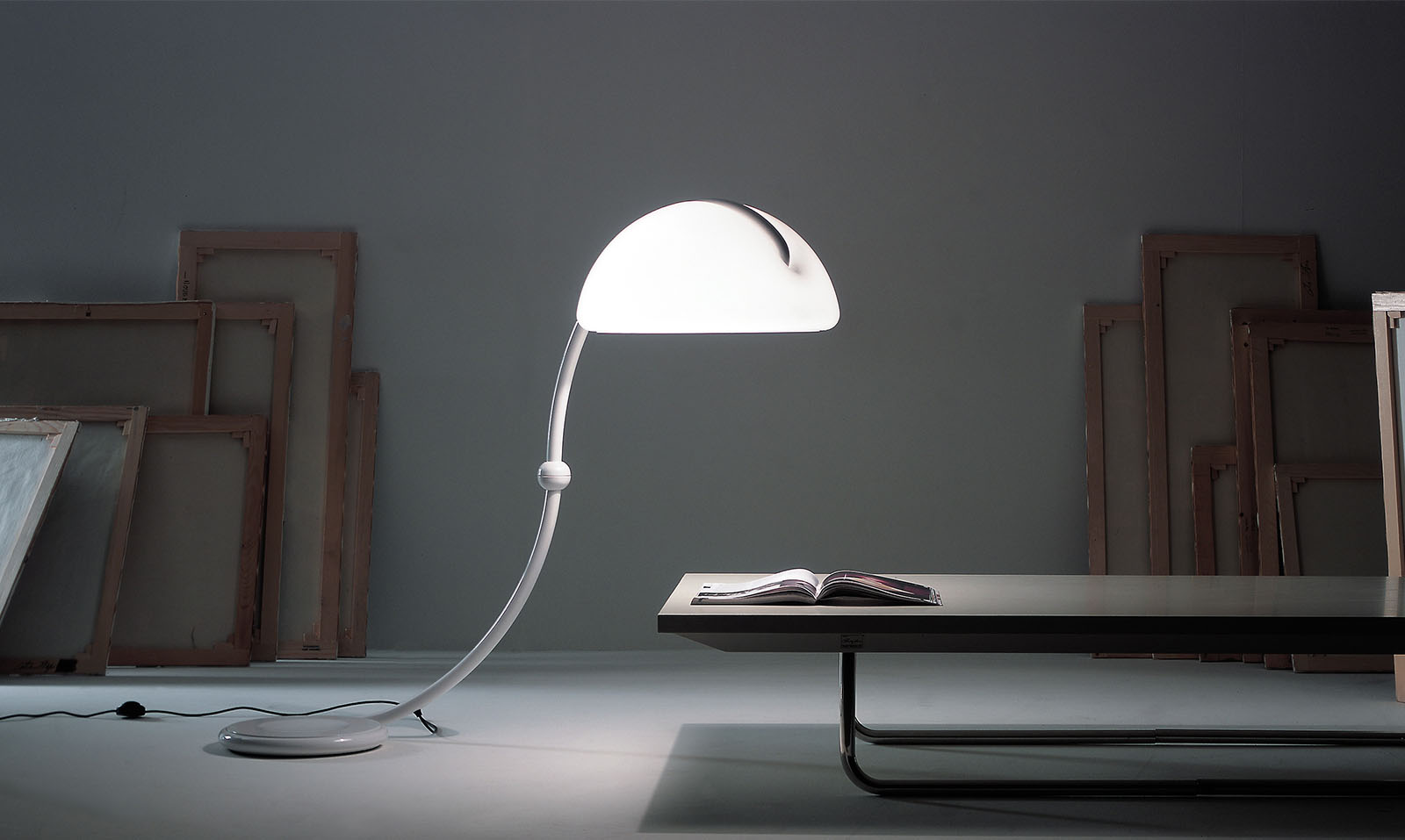What if the Serpente lamp was the most emblematic of Martinelli Luce?

Let us take a step back.


Elio Martinelli designed lamps by often looking out of the window observing the nature. When he reproduced organic forms, he modified them several times until they became lamps, using the most up-to-date technology for the period in a crescendo of insights applied to new materials, methacrylate in particular.
Serpente's revolving movement was intended to engage the user, and the diffuser's undercut—which was not achievable with the thermoforming molds available at the time—was a defining feature of the design.
Elio's desire to create something so novel drove him to create diffusers with undercuts using cutting-edge for the time molding processes, which allowed him to complete his idea.
Thus, the Serpente lamp evolved into a genuine manufacturing archetype, which, when paired with the rotating support system's solution, gave it significance from both a formal and technological standpoint.
The constant stimulus for innovation and research allowed Elio to make unprecedented experiments in shapes, which then became one of his trademarks that made him established on the design scene.
Pipistrello breaks with the rationalism of the 1960s, the elements of discontinuity introduced by architect Gae Aulenti make it a lamp that expresses an unexpected modernity, which, however, clashes with the difficulties in its realization due to the technology of the time.
Due to the dynamism that the telescopic stem required and the complex shape of the diffuser, it was necessary to find a supplier with the right solution to make Pipistrello the lamp that inspires many people today.
Sergio Camilli, the founder of Poltronova, recommended to Gae that he approach Elio Martinelli, a Tuscan businessman who pioneered methacrylate molding and had previously surpassed then-current technological boundaries by creating the Serpente lamp.
After numerous attempts, experimentation, and technological research, the founder of Martinelli Luce found the solution to engineer that lamp with a rebellious spirit that is strongly connected to our brand today.
And that is how a link between icons is born.

Let's go back to the initial question of identifying a representative lamp for Martinelli Luce.
Perhaps there is no clear solution in the quest for a single iconic lamp, since all the company's production has always been in balance with the brand's distinctive canons. Nevertheless, the Serpente lamp may be one of the better-known examples of how the brand's core values—minimalism, nature, geometry, dynamism, technology, and experimentation—are first and foremost embodied.
Alternatively, it's possible for everyone of us to create our own ranking by identifying, in one lamp or another, its emblem, its connection to the object, a value that raises it to the position of identity keeper.